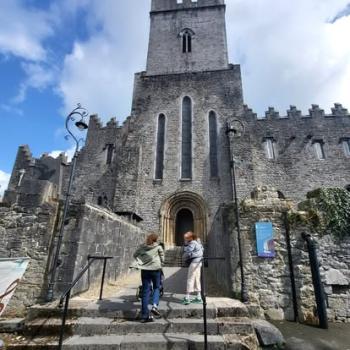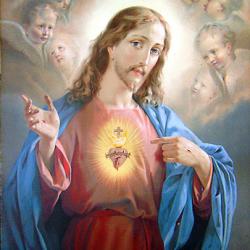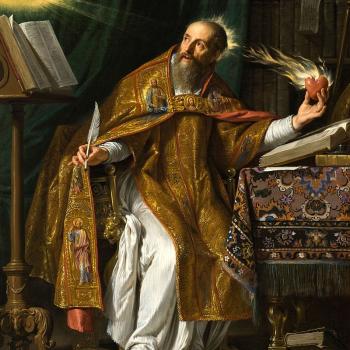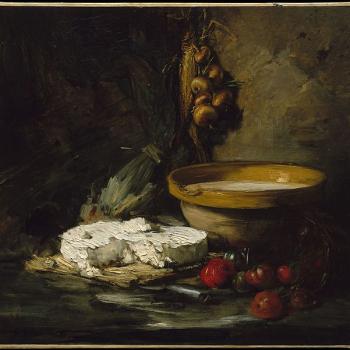
As a follow up to my previous post, here are a few examples of quotations from some of the writers from OnePeterFive and Patheos Catholic. They are not necessarily directly taken from either site, but the author is definitely featured on either site. My whole goal in the last post and this one is to show each side that we are all brothers and sisters in Christ. If we focus on what divides us will miss what actually unites us. My theological opinion is that we will all be in purgatory (if we make it that far) till we learn to get along and love our brothers and sisters that we find deplorable for their less then perfect way they fail to live up to our understanding of how Catholic faith works. I choose 12 topics and found an appropriate quote for each. My hope is that these two posts will help us to see each other in the light of Christ and that each is striving to love God and to share that love in the best way that they can.
Angels
Men can only see in a limited spectrum of light. But some animals can see other bands of the spectrum, such as ultraviolet light. The truth of the matter is that there is far more to the universe we live in that we do not see. There is an invisible world all around us, and it is probably a mercy that God shields our vision from everything that takes place in the very room we sleep in. And even if we could see this species, I have not the faintest idea what this would resemble.
While it is true that angels only occasionally take the form of men, in their spiritual form, I cannot say what they resemble. They do not fill space the way we in the physical world do. How can something exist somewhere but nowhere? Are they phased out and at a different frequency than our reality?
Laramie Hirsch (OnePeterFive Author), Guardian Angels In An Unseen World Around You (October 2, 2018) @ forge-and-anvil.com
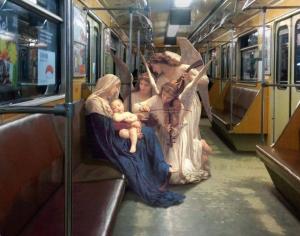
That brings us to the subject of aliens and spaceships. The Fermi Paradox suggests that there should be other civilizations on other planets that have developed technologies like ours. What! to suggest that other beings (if they exist) would be so primitive as that? To imagine that they would be so crude as to make metal containers to hurl themselves through the sky? Why not imagine that if there are other intelligences out there, that they might transport themselves and communicate in ways that are unimaginably more sophisticated than us? What if they are able to transport themselves by their advanced mental powers? What if they are able to communicate instantly across vast spaces by mere thought? What if they exist in a complex, harmonious and beautiful relationship with one another and with the whole of creation? What if they are advanced beings who exist within the music of love and service to all things? The Christian church has believed in a simple and ordinary way in the existence of such aliens from the beginning. We call them angels.
Fr. Dwight Longenecker, Aliens Elephants and Angels (February 2, 2013) Fr. Dwight Longenecker @ Patheos Catholic
Alcohol
Beer may have been invented by the ancient Egyptians, but it was perfected by medieval monasteries, which gave us modern brewing as we know it. To this day, the world’s finest beer is made within the cloister.
Michael P Foley (OnePeterFIve Author), Drinking with the Saints: The Sinner’s Guide to a Holy Happy Hour (May 5, 2015)
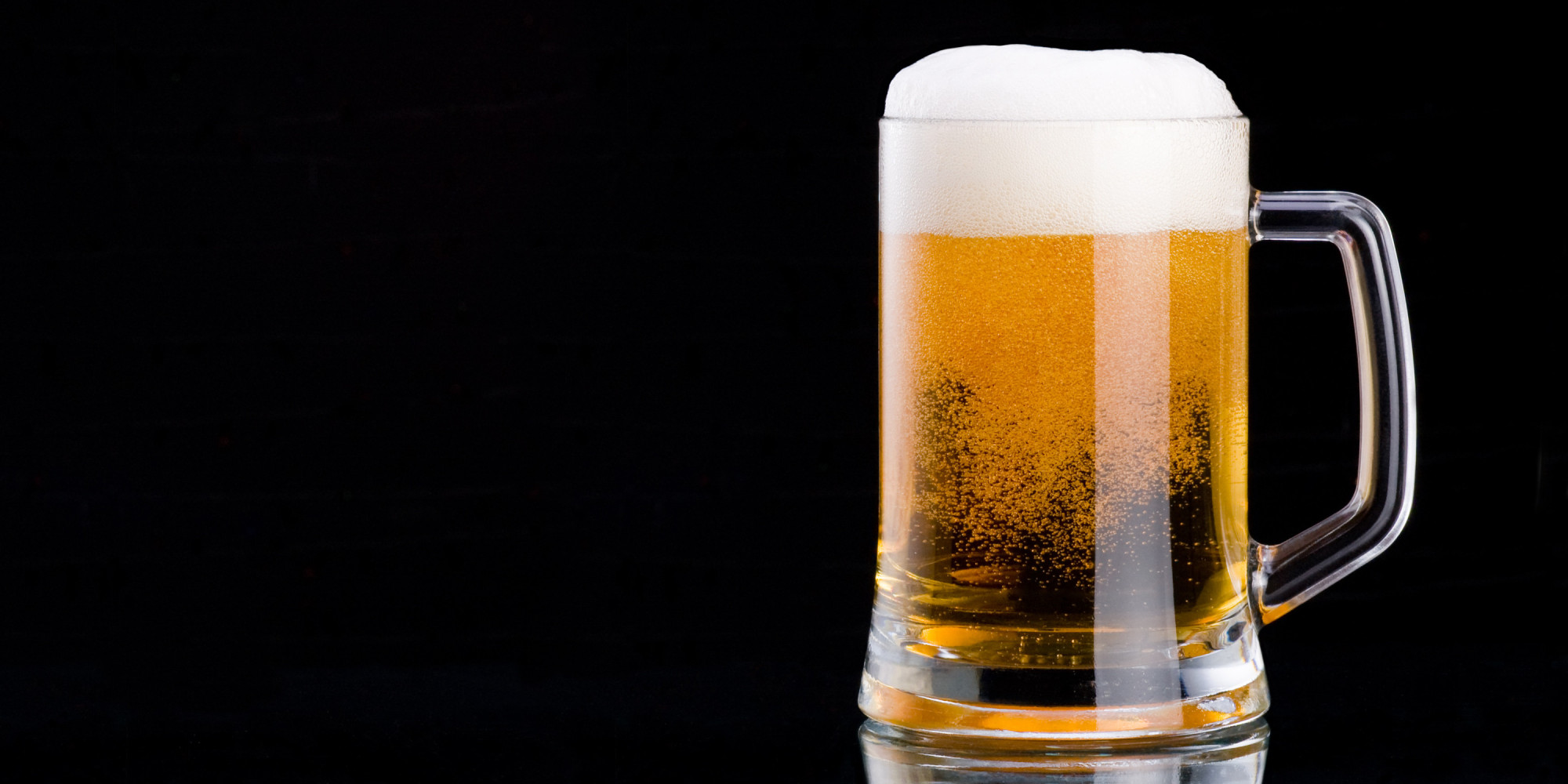
Avoid each extreme — that’s how you drink like a Catholic. This is the art of Catholic drinking. There are plenty of our brethren who consider drinking somehow immoral, and there are plenty of others who think drinking must end with great intoxication. But the balanced approach — the Catholic approach — means having a good time, a good laugh, sometime a good cry, but always with joy and gratitude for God’s generosity in giving us such wonders as beer and burgundy. Remember that, and the lost art of Catholic drinking may not remain lost.
Sean P. Dailey (Patheos Catholic Author) The Lost Art of Catholic Drinking (April 13, 2012) @ Crisis
Catholic Worldview
Christianity’s great truths come to us through a Nazarene carpenter—a tekton, a builder—whose handiwork we have no clue to. Neither do we have the faintest inkling of his response to Herod’s monumental temple complex. The whole of it, with its plaza, porticos, columns, and stairs was a glory of limestone, marble and gold. Yet Jesus directed eyes to the lilies of the field, the birds of the air, to bread, weeds and mustard seeds.
The greatest cathedral of all, the only one capable of rising to the Paraclete, is the suffering human being next to us. Until we can worship on the crosstown bus, we have yet to greet the living God.
Maureen Mullarkey (OnePeterFIve Author), Cathedrals And The Crosstown Bus (May 8, 2014) @ studiomatters.com
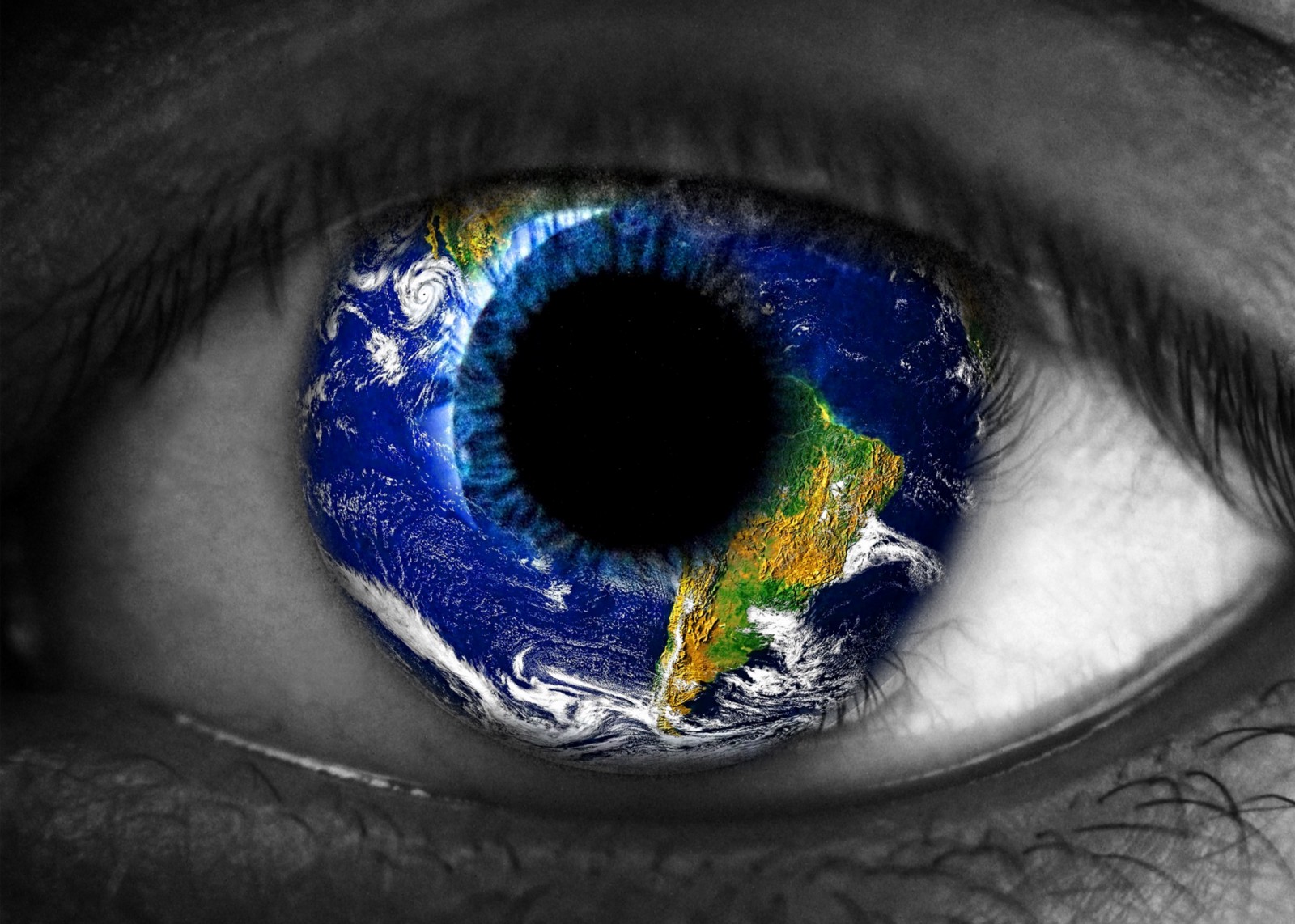
The Catholic sacramental worldview informs everything we do. We don’t just work in words; we also work in symbol and metaphor. For us, things like water, smoke, candles, bells, chant, icons, images of saints, crucifixes — even ordinary objects, like a cup or keys, or nature itself — hold deep spiritual meaning and resonance.
The Catholic imagination has a whole language of images to draw upon. Our literature, art and movies don’t need to be sermons. We can make movies about Christ that depict Him and His followers, or we can make movies about Christ that never mention Him at all.
As in “The Lord of the Rings,” by Catholic writer J.R.R. Tolkien, we can read the symbolism behind the story, interpreting it back into Catholicism, like translating from one language to another.
Kate O’Hare Alfred, Hitchcock: Cradle Catholic, Catholic Revert or Just Simply Catholic? (August 13, 2016) Kate O’Hare’s Pax Culturati @ Patheos Catholic
Civil Discourse
Matthew 23 deals with Jesus being nasty to the leaders of the pharisees. If Jesus can do it, I can do it as well, right? This is one chapter. We have to take it into account but it’s one chapter. The four gospels contain a total of 89 chapters and in one of them, Jesus is exceptionally harsh. In the other ones, He is mild, calm, articulate, firm, and even mildly angry. Still, 1 out of 89 is 1.1% of the time. Taking the words of 1.1% percent of the gospels and applying them to 80% of your behavior is not following Christ, it’s an excuse to act how you want, when you want.
The same case could be made with St. Paul. He has one chapter that’s extremely harsh and in the other chapters, there is a range of ways that he articulates his message.
There are a number of saints who are known for their harshness and even nastiness. We must remember that saints, being holy men and women are still flawed. No saint is perfect.
St. Thomas More argued against Luther, Tyndale, and other Protestants quite viciously. It’s almost painful to read at times. St. Francis de Sales was the exact opposite. He was gentle, mild mannered, but firm and spoke the truth when he needed it.
Allan Ruhl (OnePeterFive Author), Nasty Internet Stuff (October 9, 2019) @ www.allanruhl.com

A Church that is more concerned with moral “righteousness,” pointing fingers, and slapping bandaids onto spiritual diseases is much less attractive than one that is constantly seeking to draw nearer to the heart of Christ.
The “answer” to any problem will never be one that humans themselves generate…it will only come from us growing in awareness of His presence…of He who is the answer to the “problem” of the human heart.
So before pointing the finger at anyone, remember: You are the problem. You are not holy enough. And the pope has been trying to tell you this. Will you open your heart, eyes, and ears, and start listening?
Stephen G. Adubato, YOU are the reason the Church has problems (but you’re also the answer) (September 2, 2018) Cracks in Postmodernity @ Patheos Catholic
Eucharist
The last time I went to Mass and received Our Lord in the Eucharist, I did not even consider that it may have been the last kiss. Sure, we all know we could be struck down by a car on the way out of the Church, but how easy it is to forget the spirit of humility that that knowledge should produce in us! How easy it is to forget we are dust!
“My Lord and my God” — a silent chorus of a hundred hearts, joyful peasants welcoming our King, our knees pressed against cushioned kneelers or damp carpet, nobody caring which. Bowed heads, thumbs flipping through gold-edged pages, last-minute offerings and petitions and pleas for mercy. A last-minute prayer asking Mary to lend me her heart, the priest in front of me, the paten beneath my chin, the Bread of Life upon my tongue. I fall to my knees again, I pull my scarf until it hides more of my face, I bow my head. I want to be alone with this glorious King for just a second, just to thank Him for loving me.
I did not thank Him sufficiently for that last kiss. I was blind.
Stefanie Nicholas The Last Kiss before the Battle (March 24, 2020) @ OnePeterFive

I know Christ best. I’ve tasted Him a few times, usually the Blood. For an extended time a few years ago during a period of utter devastation. When I needed desperately to be touched, reassured, reminded that the world was not crumbling into ash. I can no more disbelieve the Eucharist than I can disbelieve the ice cream at my elbow, or the touch of my lover’s lips against my own. And the Church is the only place where my Lover lives. Truly lives in Flesh and Blood – and I need His Flesh, His Blood. As surely as I need a hug from a friend: the bone-crushing, breathless exorcism of false emotion and harmful thoughts.
Emily C. A. Snyder How Can You Stay Catholic? Or, Yelling At God (August 31, 2018) Pop Feminist @ Patheos Catholic
Death
The moment we die and pass from this world to the next to be judged by Our Lord and Savior Jesus Christ will determine our destiny for all eternity. Really there are only two possibilities: salvation or damnation—rejoicing in the Presence of God, His Blessed Mother, the angels and saints, or suffering the pains and torments of the damned for all eternity. Even though very sober, very serious, possibly even a bit frightening, this reality should loom before our eyes as the minutes, days, weeks, months and years evaporate before our eyes.
We should prepare for this encounter with the Lord Jesus with great calmness and peace but also with serious efforts on our part. We should beg the Lord Jesus that He be our Redeemer rather than our Judge.
Father Ed Broom, OMV (OnePeterFive Author), Your Last and Final Words??? What would you like them to be??? (Feb 10, 2020) @ fatherbroom.com

I pray a Rosary every Sunday for people in Purgatory. It takes quite a while, since I name every single person I know who has died, and I mean died, ever. I include great-great-grandparents I never met and friends of friends.
It’s the least I can do for them. I only hope that when I die, someone will take the time to pray for me.
There are many theories about Purgatory, all of them far more authoritative than mine. But my belief is that in Purgatory we face what we have done from the viewpoint of those we did it to. If, say, you hit someone, in Purgatory you would experience the blow you gave in this life. If you gossiped about someone, in Purgatory you will feel the humiliation and hurt your words inflicted.
It would be terrible enough to experience this in this life. But in Purgatory, I think our souls will be so tender and so pure that the pain will be even more exquisite.
The souls in Purgatory are not being tortured. They are being educated about their real selves. They are seeing themselves as they are, and this insight hurts. It is the deepest grief imaginable to confront the full reality of your own sins. But from this grief comes conversion of a thorough and unalterable kind.
Rebecca Hamilton, Divine Mercy Novena, Praying for Those in Purgatory, Where We are Made Fit for a King (April 10, 2015) Public Catholic @ Patheos Catholic
Humor
Humor makes a thick and tasty sauce to flavor the rather pungent meat of Catholic metaphysics and morals – which is hearty, low-fat, and nutritious, but you must admit has kind of a “wild” taste, like deer meat or turtle. Sometimes joking about such things is useful and truthful. A humorless Faith is stereotypically brittle or repulsive, raising the obvious question: “If believing all this stuff will make me a prig like you, do I even want to consider it? What I’ve learned from secular comedy’s counter-apostolate is this: People’s hackles go up when you attack them and drop when you tickle them. Get someone laughing – as the best Catholic authors knew how to, from Waugh and Chesterton to Percy and O’Connor – and his barriers collapse.
John Zmirak (OnePeterFive Author), A Spoonful of Splenda (Mar 30, 2011) @ Crisis

Good humor is an essential part of a good life. Science and theology, together, can show us how. We can explain humor scientifically at any number of levels. If you think about it physiologically, the act of laughing is pretty odd. Fifteen muscles in your face contract. Your larynx half-closes, making you gasp for air. Sometimes your tear ducts are activated. And you produce short, vowel-type noises about five times per second.
Laughter is a social phenomenon. In the brain, there are regions in the prefrontal and auditory cortices responsible for detecting laughter in others — and these regions don’t light up when you hear fake laughter. This is likely how real laughter becomes contagious.
Sofia Carozza, Laugh, Dammit: Why You Need Good Humor (December 20, 2019) Synapses of the Soul @ Patheos Catholic
Incarnation
Catholic theologians throughout the life of the Church have elucidated, analyzed, and protected the doctrine of Christ’s incarnation. But few have captured this mystery in so arresting, direct, and radiant a manner as the sacred arts. In her literature, hymnography, paintings, and gardens, the art of the Catholic Church guards and illuminates the complex doctrine of the Incarnation by depicting this simple image: a mother nursing her baby. A contemplation of literature, music, and imagery bearing the Maria Lactans message will bear fruit for all Catholics in every vocation today, just as it has across cultures for nearly two thousand years. For Our Lady is, as our Eastern Christian brethren say, the Galaktotrophousa, or, “Milk-Giver” and “Nourisher of Life,” still providing for us the physiological and mystical nourishment she gave to her Son.
Elizabeth Lemme, Maria Lactans: How Our Lady Feeds Her Son, and Us (November 12, 2019) @ OnePeterFive
![]()
While on Earth he did not appear as a man, nor was He a spirit that possessed man until the point of the crucifixion as the Docetists and Gnostics would say. From the time of His conception in the womb of the Blessed Virgin Mary he was both fully God and fully man. This was stated by many church fathers, declared at the Council of Nicea, and at the Council of Chalcedon this became known as the Hypostatic Union. Jesus was not either or, but He has BOTH a human nature AND a divine nature.
That is why the Incarnation is so amazing, and to be perfectly honest this barely scratches the surface. The second person of the Blessed Trinity, who became man, and experienced everything that we did but was without sin. He died as the perfect offering for our sin because He loves us that much and he thinks that we are worth being with for eternity!
William Hemsworth, Meditate On The Awesomeness Of The Incarnation (January 27, 2020) The Pursuit of Holiness @ Patheos Catholic
Marian
In a remarkable series of apparitions in the 19th century – in Rue du Bac, in Rome, in La Salette, in Lourdes, in Pontmain, in Knock – the Mother of God made herself known. The Blessed Virgin Mary left her mark not only through private encounters or spiritual messages, but in a tangible way that tens of thousands of people had seen and could believe.
She left the Miraculous Medal and its thousands of miracles at Rue du Bac. St. Catherine Labouré’s incorrupt body, another miracle, is entombed there to this day. She converted Alphonse Ratisbonne, an anti-Catholic Jew, in Rome. She appeared in La Salette to warn the people of rotten harvests, temporal and spiritual, and how to overcome them. She left a miraculous grotto and tens of thousands of healed people over the centuries at Lourdes. She appeared with St. John and St. Joseph to an entire village of people at Knock to testify to the living nature of the Saints in Heaven.
James D, The Virgin Mary and the Woman Drunk with the Blood of the Saints (September 18, 2018) @ OnePeterFive

Today is the Memorial of the Queenship of Mary. What a lovely, lovely feastday. Let’s imagine the Blessed Mother, shall we? She has only been in Heaven for a week now, and still doubtlessly absorbing the wonder of the place. But what is this? Angels, coming for her? Again? And where are they taking her? And what are they placing on her shoulders? This ermine-trimmed robe, heavy with golden embroidery. And where are they leading her? To this astonishing court of thousands? Millions? Singing, shouting in triumph! She might not even know what to make of such grandeur. But, at the end of the red carpet (because of course), she can see her Son. Naturally she moves towards Him, because, in the end, there is nothing left to be done but to move toward the Son.
And He is there, smiling. And she kneels before Him, because of course. Every knee shall bend before Him, the King of kings. And he has a crown so wondrous, so spectacular, it beggars the imagination. Twelve stars, fresh from their orbits, endlessly swirling and twinkling (they make diamonds look dull). And He, grinning like only the Son of such a Mother can, places it on her bent head. And she weeps with joy. And He wipes every tear from her streaming eyes. Because of course. And He gives her His hand, and helps her sit on her throne, soft and cushiony, and covered with jewels and probably held slightly aloft by angels. Nothing is too good for Mary. Nothing.
Cynthia Schrage What Does It Mean to be a Queen? After the Ecstasy, the Laundry…@ Patheos Catholic
Prayer
At last, a place for those things that float around your house — the odd statue, the prayer cards, the icons, the rosaries. Gathering them into one place, you will find that they become more than the sum of their parts. They no longer are just things to look at (or, worse, to attract dust while we don’t look at them); they become a shrine.
God works with small and humble material to do great things. What we may experience in the life of prayer at home as barely detectable moments of consolation truly is the Kingdom of God breaking out in power on the world, redeeming it. These little, humble shrines in our homes, the ones with a few old funeral Mass cards and a flower that should have been removed two days ago, the ones under which the dogs sometimes lie and scratch themselves, these connect us and our children to the ongoing liturgy of the Church itself.
Michael Brendan Oratory: A Beginner’s Guide to Praying in the Home Dougherty (August 1, 2016) @ OnePeterFive

The Lord’s Prayer is about who Jesus is in our lives, and it helps us see that our journey here is not solely about rescue (though we absolutely need that) but about intimacy with Christ and delight in Him. Praising God is part of how we delight in Him. The reward for loving God is God Himself. He is sweetness beyond even the great hope of “a reconciled community” or “a clean conscience.” The doxology gives us a foretaste of the next life, “when we will have no more need to ask God for bread, for absolution, or for rescue,” and petition will dissolve into pure praise.
Eve Tushnet, From Mercy to Delight: Wes Hill’s “The Lord’s Prayer: A Guide to Praying to Our Father” (December 11, 2019) Eve Tushnet @ Patheos Catholic
Saints
We see in the lives of the First Tier Saints that the key factor is the love of God, who is waiting to shower His gifts of grace on anyone who shows the slightest interest or puts in the least effort. Even the greatest sinners — prostitutes and profligates (St. Mary of Egypt), murderers and thieves (St. Moses the Black, St. Vladimir), apostates and demon-worshippers (St. Bartolo Longo), adulterers and fornicators (St. Augustine of Hippo and St. Margaret of Cortona) — have been completely changed by seeking this union. In mystical theology, it is called the “Transforming Union” for a reason.
Reading these lives, we see immediately that sanctity of the highest order is rare and extraordinary, yet we are effectively commanded to achieve it. This apparently impossible conundrum is solved by a single line of the Gospel: “With men it is impossible, but with God all things are possible.” We are not called to barely make it into Heaven. The imperative “Be perfect, therefore, as your heavenly Father is perfect…” is not something to be passed over lightly. Nor is it an unjust, impossible demand. Therefore, the question “how?” takes on an immediate urgency. But it is also at the same moment solved by the lives of the saints. What did they do? Do that.
Hilary White, How to Become a Great, Wonderworking, Levitating, Bilocating, Ecstatic-Vision-Having Saint (May 2, 2019) @ OnePeterFive

The merciful love God has for all of us.
This is the love we are called to emulate, the love we are called to give.
More importantly, this is the love we are called to live.
And what does it get you?
Look around you. Look at the statues of people whose names you know so well. Anthony and Jude. Look at the windows of Agnes and Stephen. Study the figures in the reredos behind the altar: Boniface, Dominic, Patrick, Francis.
Love made them saints. Love of God. Love of the Eucharist. Love for others.
Today is a good day to renew our hope and our resolve to be like them.
And as you look at them, notice something else. You don’t see them at eye level. You have to look up. And that, too, is what the saints call us to do — to look up, not just at them, but beyond them, to the God who makes all things possible. Even sainthood.
Today, as we pray with them and ask them to pray for us, pray that they may help us live out that radical teaching, The Beatitudes.
Pray that they may help us be “blessed.”
And pray that they may help us become, in every sense, “practicing” Catholics
Deacon Greg Kandra Practicing Catholics: Homily for the Solemnity of All Saints, November 1, 2019 (October 31, 2019) The Deacon’s Bench @ Patheos Catholic
Resurrection and Evangelization
The Resurrection of Christ is the most important event in history, both world history, and our history. Without it, our lives are hopelessly confined to this world. But with it, this world can become the beginning of a life of eternal happiness with God in heaven. This is the good news; this is what we need to emphasize in our evangelization. Like St. Peter and St. Paul, we must make the Resurrection the central focus of our preaching, and of our lives.
Eric Sammons (OnePeterFive Author), The Resurrection and Evangelization (April 29,2019) @ ericsammons.com
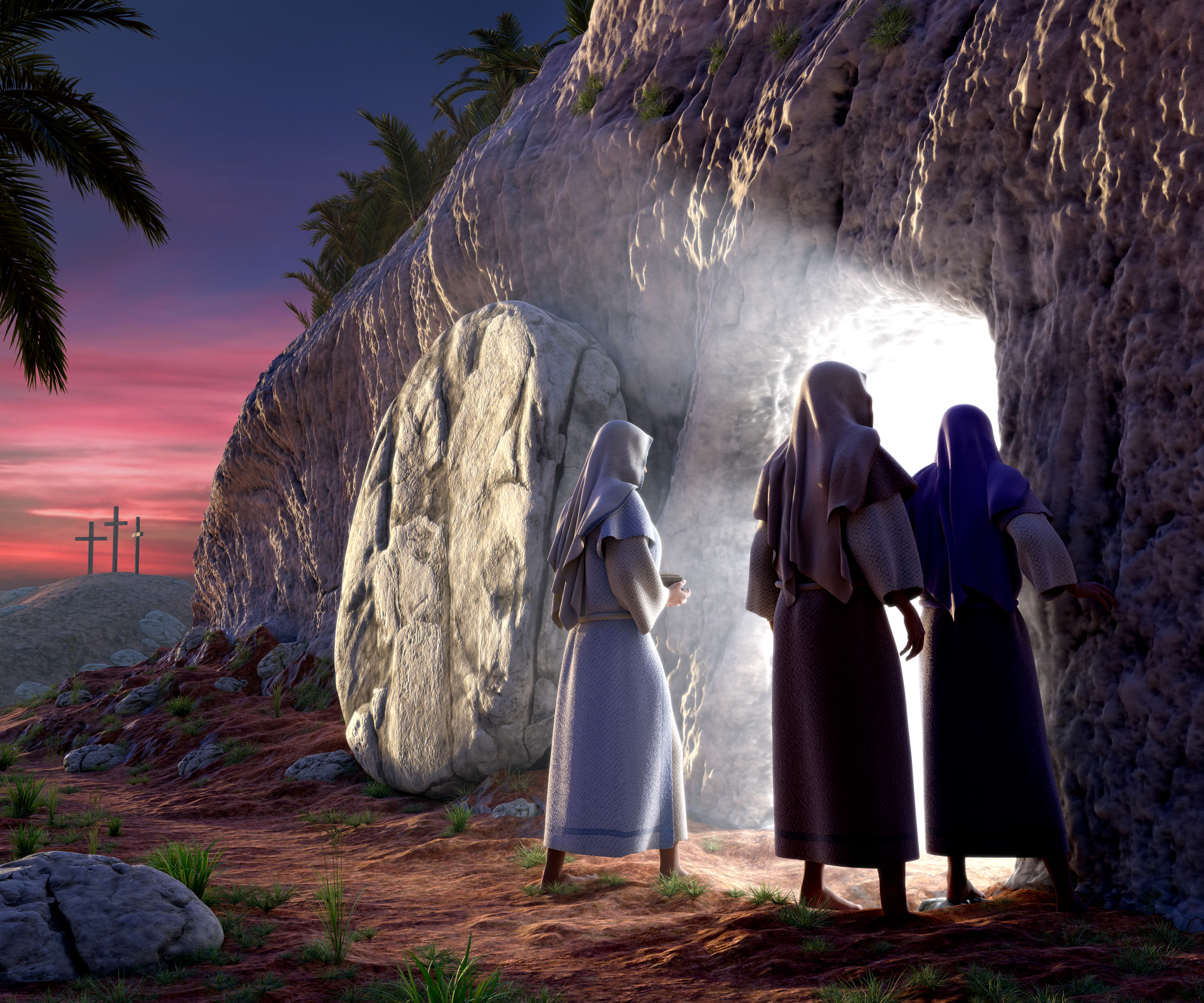
Laugh. Laugh til your sides ache. Laugh til you cry like a Magdalene– then go forth and preach like a Magdalene. Spread the word til the ends of the Earth. Nothing will be as it was before. All was transformed into grace by the Passion of Christ, and this morning all was transformed into glory by His resurrection. The gates of Heaven stand open. The Bridegroom has returned with the Light of Life.
Why do you seek the living among the dead? Christ is not dead; He is risen! Alleluia! He is risen indeed!
Mary Pezzulo, Laugh Like a Magdalene (April 1, 2018) Steel Magnificat @ Patheos Catholic




